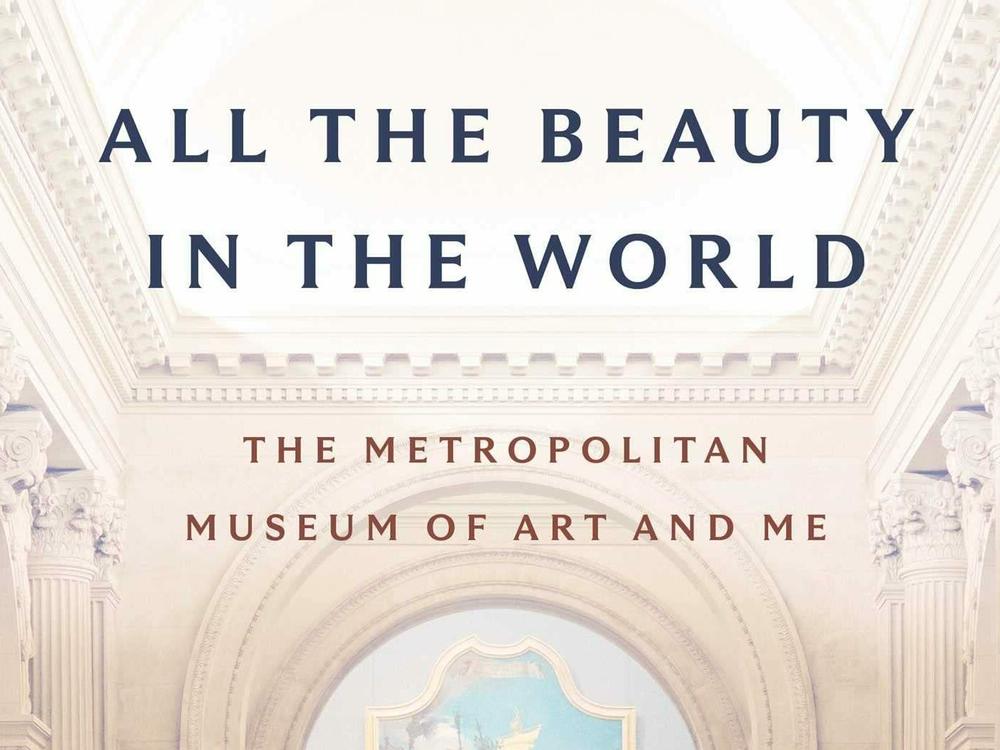Section Branding
Header Content
'All the Beauty in the World' conveys Met guard's profound appreciation for art
Primary Content
All the Beauty in the World, Patrick Bringley's memoir about his ten years working as a guard at New York's Metropolitan Museum of Art, brings new meaning to the term "art appreciation." In the pantheon of winning books about the Met, it is right up there with E.L. Konigsburg's From the Mixed Up Files of Mrs. Basil E. Frankweiler.
Like the runaway siblings in Konigsburg's 1968 Newbery Medal-winner — who unlock secrets about the museum's treasures after camping out in its hallowed halls (sleeping in an ornate 16th century English Renaissance bed and bathing in the fountain, from which they fish out spending money) — Bringley offers an unusual, insider's vantage point on this vast palace of art. During 8-12 hour shifts spent rotating among the galleries in carefully choreographed assigned posts, he takes advantage of the gift of time to study the masterpieces he's been hired to protect — and to ponder the role of art throughout history.
Bringley is certainly not the only Met staffer to write about the institution. A notable recent example: In 2019, Christine Coulson, who worked her way up the ranks at the museum from summer intern over more than 25 years, published a part factual, part fantastical novel, Metropolitan Stories.
But Bringley's guard's-eye view is unique, and he presents his personal story with a refreshing sincerity and absence of edginess or posturing. In the wake of his 27-year-old brother Tom's death from cancer in 2008, Bringley, two years his junior, gave up a prestigious "high-flying desk job" at The New Yorker, where "they told me I was 'going places,'" for a job in which "I was happy to be going nowhere." He explains, "I had lost someone. I did not wish to move on from that. In a sense I didn't wish to move at all."
Drawn to "the most straightforward job I could think of in the most beautiful place I knew" — a job that promised room to grieve and reflect in the wake of his loss — Bringley arrived at the Met in the fall of 2008. He explains his state of mind when he pivoted toward this union position for which he donned a cheap, blue, polyester uniform and received an allowance of $80 a year for socks: "My heart is full, my heart is breaking, and I badly want to stand still a while," he writes.
Bringley doesn't say when he decided to channel his experience of finding solace in art into this book, though it's clear that he took notes throughout his 10 years at the museum. But this pre-pandemic story — about jumping off the career ladder and deliberately taking a position divorced from ambition in order to find the space for quiet contemplation — is oddly suited to our times.
All the Beauty in the World offers well-chosen facts about the museum and Bringley's co-workers to anchor his personal tale. The Met opened in 1880 and has since sprawled to more than 2.5 million sq. ft., "the size of about 3,000 average New York apartments." Its holdings, built on private donations — unlike Europe's royal collections — holds more than 2 million objects, only a fraction of which are shown at a time.
The "salmon run of visitors" that ascends the Grand Staircase every morning when the Museum opens adds up to a crowd of nearly 7 million visitors a year — "greater attendance than the Yankees, Mets, Giant, Jets, Knicks, and Nets combined," though less than the Louvre or the National Museum of China. Half are from overseas, and half of the United States citizens are from out of town.
Of its more than 2,000 employees — which include curators, custodians, carpenters, conservators, riggers, art handlers, and more — about 600 are guards, nearly half of whom are foreign-born, including many from Guyana, Albania, and Russia. Bringley loves the diversity.
As compelling as these facts are, it's Bringley's reflections on dozens of individual paintings, photographs, sculptures, and ancient artifacts that elevate this memoir into a paean to the power of art. Discussing Alfred Stieglitz's captivating photographs of his wife, Georgia O'Keeffe, he writes, "I think that sometimes we need permission to stop and adore, and a work of art grants us that."
Although not religious, Bringley is particularly drawn to sacred art from all over the world. He is especially moved by the "luminous sadness" of old Christian paintings. He admires the graceful broken body of a 15th century Italian Crucifixion by Fra Angelico, in which he finds a reminder that "we're mortal, that we suffer, that bravery in suffering is beautiful, that loss inspires love and lamentation."
In a Vermeer portrait of a dozing maidservant, he is moved to see that the artist captured "that feeling we sometimes have that an intimate setting possesses a grandeur and holiness of its own. It was my constant feeling in Tom's hospital room."
Wonderfully, each of the artworks Bringley discusses are listed at the end of this beautiful book. Even better, they are accompanied by links to images on the author's website at patrickbringley.com/art.
As rich in moving insights as the Met is in treasures, All the Beauty in the World reminds us of the importance of learning not "about art, but from it." This is art appreciation at a profound level.
Copyright 2023 NPR. To see more, visit https://www.npr.org.

